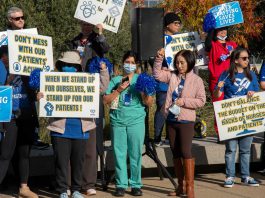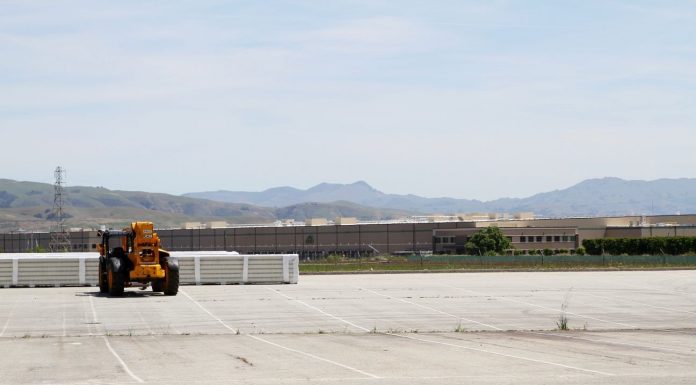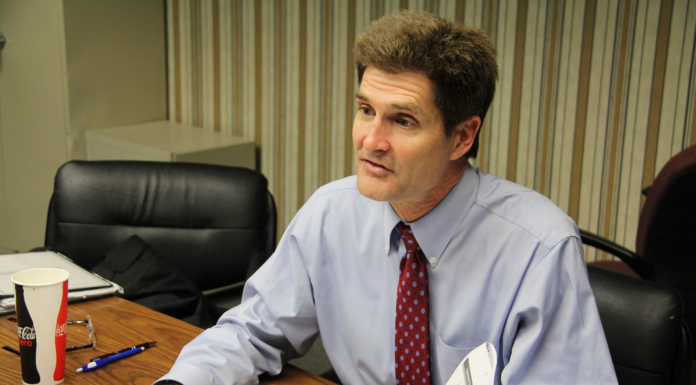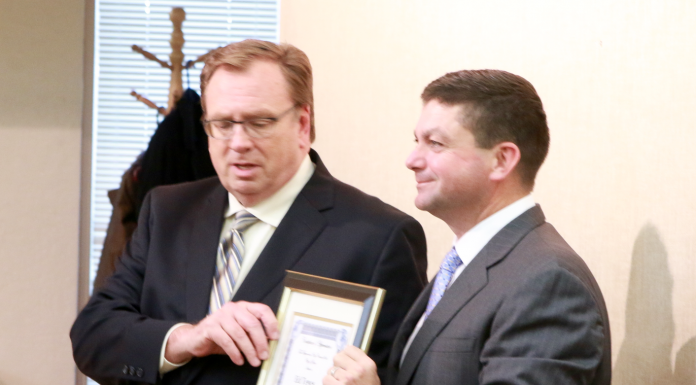Gilroy Wine Center Proposed off Highway 101
Three Gilroy winemakers have bought 7.4 acres on the east side of U.S. 101—at 6500 Brem Lane, behind the Target and in front of UNFI—to turn an old roof tile factory into a colorful winemaking landmark.
Bad Sidewalks and No Sidewalks
Gilroy’s longest serving city clerk and the first appointed by the City Council, Susanne Steinmetz, was remembered by the council at its April 4 meeting.
Opponents Cry Foul When PR Rep for Developer Takes Website
The fight over the proposal to put 4,000 homes on 721 acres north of Gilroy is nowhere near over, even though the project has been temporarily shelved.This week the battle got hotter, as opponents of the project, who go by the name Growing Gilroy Smarter, lashed out at project developers for what they said was a desperate attempt to mislead voters.Project opponents post their messages on the website address GilroyGrowingSmarter.org. But the Rancho Los Olivos developers bought the dotcom version of the same name, which sent users to a site promoting the Rancho Los Olivos development.Members of the Growing Smarter group, who are collecting petition signatures for a ballot measure that would require voters to approve any new big developments in the city, cried foul.“I went to the Gilroy Growing Smarter page and typed in .com on accident and up pops the page of your development,” wrote Joe Lovecchio in an email to the Los Olivos developers. “Y'all must be getting desperate now. Marketing at its lowest form. I bet the people over at GGS are flattered. This just confirms how shady a deal this is. Rather than create an identity you’d rather use smoke and mirrors. I’ll make sure to inform others of your tactics. Best of luck.”David Lima, one of the Growing Smarter leaders wrote in an email to the Dispatch: “Is hijacking our visitors a form of flattery?”Kristina Chavez Wyatt, the publicist who bought the GilroyGrowingSmarter.com domain name, said she did it in order to make sure that people who were interested in seeing Gilroy grow smarter were informed about the Los Olivos project. However, after hearing complaints, she said Wednesday she would take it down or redirect the .com requests over to the Gilroy Growing Smarter.org website.“If you believe you’d like Gilroy to grow smarter, then Rancho Los Olivos is a sound decision,” she said, adding that a competing project was worse. “If you believe building 1,000 houses south of town on prime farmland without being vetted for the California Environmental Quality Act or having proper provisions for schools or traffic mitigation . . . that is a concern. It’s important that people get the facts and the Rancho Los Olivos website has facts.”Later in the day she texted: “I’m working to release the .com URL or just redirect to org. No need to cause unnecessary distractions.”Chavez Wyatt said she had been attacked on social media sites and called “slimy,” which she resented after years of community service. “We are just trying to bring out the facts,” she said.The application to rezone farmland and annex land as a prelude to the construction of 4,000 or more homes was withdrawn in January. Mayor Perry Woodward and the project’s developers issued a press release saying the project was paused to educate the public about the plan’s benefits.“I would say the application is not active currently but the Rancho Los Olivos landowners investment team and developer would very much like to see the application proceed at the proper time,” said Chavez Wyatt.“One reason why Rancho Los Olivos pulled the application is that they got stuck in a political cycle. Now that they’ve invested in facts and research, the community gets to know the details behind it.”She added that the developers and the city have spent hundreds of thousands of dollars vetting the proposal and making a long-range general plan for the area, which would be thrown out if the Gilroy Growing Smarter group has its way.Also, requiring a vote for new development would discourage businesses such as Google from building in the city, she said. The initiative drawn up by Gilroy Growing Smarter exempts industrial campuses consistent with the general plan from the public vote requirement.The Gilroy Growing Smarter group has until September to raise almost 2,000 signatures and put a measure on the November ballot that will restrict the council’s authority to authorize new residential growth outside of city limits.
Streets “Worst” in Gilroy History
While Gilroy residents lament the condition of the city’s roads, with plenty seeing them as minefields of potholes, a report presented to the City Council on Monday states Gilroy city streets are “good” but could be spiraling down if costly intervention is not taken.
On the Table: A Gun Shop and Plaza Downtown?
A gun shop and an outdoor plaza might bring some big changes downtown. The firearms shop is considering moving to the Pinnacle building on Monterey Road, the first storefront for firearms since Walmart stopped carrying them. Right now there are eight dealers with permits to sell weapons out of their homes and one of them has appeared before city staff to see what would be needed to rent the downtown space.“If it’s done right, fine,” said Mayor Perry Woodward. “It’s just another retail use. We’re still a rural community in many ways and fishing and hunting are popular here. If you come back and tell me it’s all assault rifles, I might have a different point of view. If it’s done responsibly and within in the law, it serves a need.”Woodward got to talk about his real dream for downtown Monday for the first time, because he sold a property he owned there that kept him from voting on downtown issues. He wants to knock down the former billiards hall and put a public plaza there with trees, a stage and benches. It would be a place for the community to come together for activities, after which they would shop in businesses catering to them.“I want to see the day when people in Morgan Hill say they wish they had a downtown like Gilroy’s,” he said. It would require the city to buy the building and the one behind it and knock them down. The billiards hall is now slated to house the Community Media Access Partnership television station now housed at Christopher High and a computer center for people to study and use desktops.John Russell, of Rally Round Downtown Gilroy, said he would be happy with a gun shop or any retail, "as long as it's not another salon or piñata shop."
Half Cent for $6 Billion Transit
Santa Clara County residents will pay a half-cent sales tax to improve roads, trains, bike and pedestrian paths to the tune of $6 billion, if a major group representing the top businesses in Silicon Valley has its way.
Monday’s City Council Update
The cake was out on Monday as the City Council said farewell and thanks to interim city administrator Ed Tewes, who attended his last council meeting on the dias before turning the keys to City Hall over to new administrator Gabriel Gonzalez.
Q and A with Mayor Perry Woodward
No one could argue that serving on a city council isn’t a grinding activity, requiring one to parse and analyze dense, technical and unfamiliar material, then comment as though one were an expert and to always without fail, make the right decision.


















